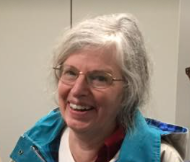Researchers looking at a rare disease make breakthrough that could benefit everyone
Researchers looking at a rare disease make breakthrough that could benefit everyone
Geneticists unveil workings of 3 genes that control cell development and growth
MONTREAL, March 1, 2011 – By working with Canadians of French ancestry who suffer a rare genetic disease, researchers have discovered how three genes contribute to abnormal growth, making a breakthrough that will improve our understanding of many disorders such as foetal and childhood growth retardation, abnormal development of body parts and cancer. “As a result of the Human Genome Project, we know the basic identity of essentially all the genes in the human body, but we don’t automatically know what they do in detail,” explained lead researcher Dr. Mark Samuels of the University of Montreal’s Department of Medicine and the Sainte-Justine University Hospital Research Centre. “It’s like opening your car and seeing the parts, but not knowing what each one does. When a part breaks however, you learn how it fits with the rest of the machine. Working with people who have specific health or development problems linked to specific genes enables us to see how those genes contribute to our bodies’ development and functioning.”
In this case, the team of researchers characterized the molecular basis in patients who suffer from Meier-Gorlin Syndrome (MGS), a rare disorder that is characterized by short stature, small ears, and absent or underdeveloped knee-caps. The patients were mostly francophonic, coming from the Maritimes, Quebec, British Columbia as well as the Louisiana Cajun community. MGS is a classic “single gene disorder,” meaning it is related to mutations in individual genes, although in the case of MGS different patients surprisingly seem to carry mutations in any of three different genes.
The genes are called ORC1L, ORC4L and CDT1, and are known to play a critical role in correct copying of DNA. Cells reproduce by dividing in two. All the chromosomes must also be duplicated. This process is tightly controlled to prevent having too many or two few copies of large segments of the genome. “This seems to be the first example of any naturally occurring, inherited mutations identified in this set of important regulatory genes in any mammal. Finding the genes is a great example of the value of this type of research,” Samuels said. “We learn the cause of the disease, and discover new things about our cellular function. However we still have a lot to learn about why mutations in these genes lead to the specific consequences in Meier-Gorlin patients.”
There are 20-25,000 genes in the human genetic sequence, and it’s important to note that they don’t necessarily each correspond to a specific function or group of functions, or indeed to a single disease. The same gene can have subtle effects on a number of bodily functions. Moreover, in complex genetic diseases – diabetes, for example – environment and lifestyle have as much or more of an impact on health than a person’s genetic background.
“Understanding rare genetic conditions like MGS is important to the general public for two reasons,” Samuels stressed. “Firstly, they provide insight into how our genes, and therefore our bodies, work. Secondly, although there are few people concerned for each particular disorder, in sum all patients with genetic conditions consume substantial amounts of health resources, and by diagnosing them more quickly, we can improve patient management and reduce the strain on the health care system.” Research suggests that up to 70% of admissions to paediatric hospitals may be related to some kind of genetic disorder. “It’s also important to note that behind the science and the statistics, there are real people suffering. It’s an immense relief for patients and their families to finally have a clear diagnosis,” Samuels added.
In an unusual coincidence, a competing team of researchers obtained similar findings on Meier-Gorlin Syndrome in a different set of patients. These findings were published in the same issue of Nature Genetics. Samuels notes, “Neither team can claim absolute priority in the discovery. However this is the way science works best: when important results are quickly verified by multiple teams independently.”
Related Articles
- The Promise and Payoff of Rare Diseases Research, From NIH Director Dr. Francis S. Collins (NIH MedlinePlus Magazine, May 2011)
- The NIH Undiagnosed Diseases Program (NIH MedlinePlus Magazine May 2011)
- NIH researchers create comprehensive collection of approved drugs to identify new therapies (jflahiff.wordpress.com)

Hi there, my name is Troy. I have the above condition described. Both my parents are originally from New Brunswick. I currently live in Ottawa. I am 37 years old and was “Officially diagnosed” with Meier Gorlin syndrome about 5 or 6 years ago. However Meier Gorlin and I have lived together all my life name or no name. I have no knee caps and the other common characteristics of the condition. I have noticed over the years a clear deterioration of my knees and subsequently my legs and mobiity have decreased as well. I am wondering how many people are there with this condition? I have never met anyone else like me. My life has certainly been affected by this condition however my greatest disappointment has been the response of others around me throughout my life. I have found societies treatment of me to be far more debilitating than the condition itself. The pain of arthritis in my knees, sometimes constant throbbing at night which makes it difficult to sleep is a far cry from the years of torment from other children while growing up. Meier Gorlin has left its mark but societies treatment of me is far deeper.
Troy
Thank you Troy for the posting. It reminded me that diseases affect people, not biological systems.
And that to be truly human is, in least part, to have both head and heart.
Please check your email for the reply I sent this morning.